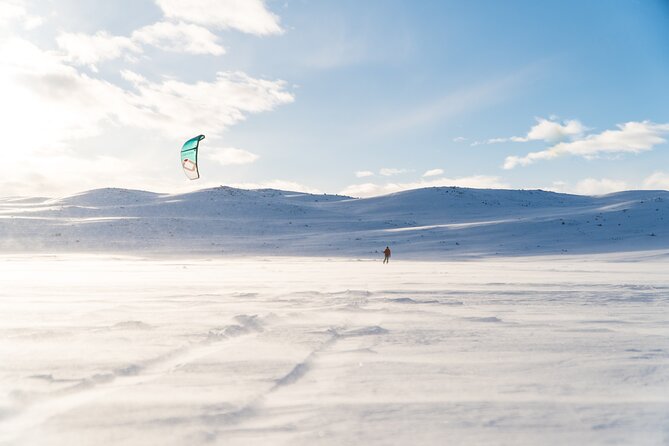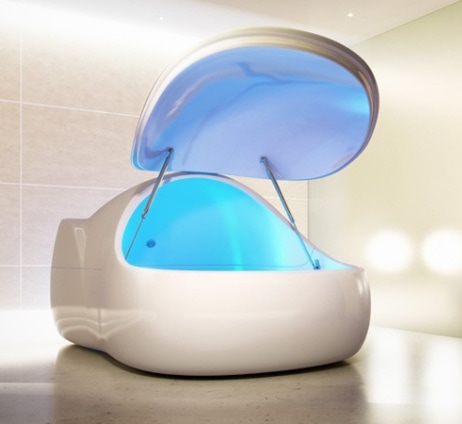Embrace the Ice: Solitary Pursuits for the Winter Thrill Seeker

The world shrinks in winter, not in size, but in sound. The boisterous chatter of summer fades into a hushed reverence. Gone are the crowds, the distractions, the easy comforts. What remains is a stark, breathtaking landscape and the quiet echo of your own thoughts. This isn't just about adrenaline; it's about introspection, self-reliance, and the profound peace found in the heart of winter's solitude. We're not talking about ski resorts; we're talking about the raw, untamed wilderness. It's about pushing boundaries, both physical and mental, and discovering a deeper connection with yourself and the natural world. Are you ready to embrace the ice?
Plunging into Siberian Silence: Ice Diving Lake Baikal
Imagine a canvas of sapphire ice stretching to the horizon, the wind a low whisper across its frozen expanse. Beneath the surface, a world of crystalline structures awaits, formed by the lake's unique freezing process. Lake Baikal, the world's deepest and oldest freshwater lake, transforms into a surreal underwater wonderland during the Siberian winter. Ice diving here, near Listvyanka, Russia, is an experience unlike any other. It's a deep dive into a realm of profound silence and otherworldly beauty.
But this isn't for the faint of heart. Diving in near-freezing water presents significant challenges. Limited visibility, often reaching only up to 15 meters in optimal conditions, requires careful planning and precise execution. Strong currents can test even the most experienced divers, and the extreme cold necessitates specialized equipment. You'll need a dry suit specifically designed for ice diving, along with a full-face mask to protect your face from the frigid water. Communication is paramount, and specialized underwater communication systems are essential.
Safety is, of course, the utmost priority. Ice diving in Lake Baikal demands experienced guides certified in ice diving techniques. Adherence to strict dive plans is non-negotiable. While guided tours may be available, independent expeditions require meticulous planning and a deep understanding of the risks involved. Always check ice thickness and stability before entering the water. Consider using an ice screw to verify ice integrity.

The Underwater Wonders of Baikal's Frozen Depths
What makes Lake Baikal ice diving truly unique are the breathtaking underwater formations. Frozen methane bubbles, trapped in the ice during the lake's freezing process, create mesmerizing patterns that seem to defy gravity. These shimmering spheres are a testament to the lake's unique geological activity. Unique ice caves also form along the shoreline during the winter freeze, offering divers the chance to explore intricate tunnels and chambers sculpted by the relentless force of nature. The play of light through the ice creates an ethereal glow, illuminating the surreal landscape below.
Riding the Arctic Winds: Snowkiting Hardangervidda National Park
Picture yourself harnessing the raw power of the Arctic wind, gliding across a seemingly endless expanse of snow. Hardangervidda, Europe's largest mountain plateau, offers a unique canvas for snowkiting, where the only limit is the horizon. Located in Norway, this vast, windswept landscape transforms into a snowkiter's paradise during the winter months.
Snowkiting in Hardangervidda is not for the inexperienced. Unpredictable wind conditions can shift rapidly, demanding quick thinking and masterful kite control. Sub-zero temperatures require extreme cold weather gear and a thorough understanding of hypothermia prevention. The potential for whiteout conditions adds another layer of complexity, making strong navigational skills and experience with winter survival techniques absolutely essential.
High-performance kites specifically designed for snowkiting are a must. You'll also need skis or a snowboard adapted for kite-assisted gliding. Windproof and waterproof clothing is crucial for protecting yourself from the elements. A GPS navigation device is indispensable for navigating the vast, featureless landscape. It is important to check the weather forecast regularly, use a compass, and ensure that your GPS is working accurately.
While you might find some independent instructors, commercial snowkiting tours are not widely available in Hardangervidda due to the challenging conditions. Therefore, planning an independent expedition or seeking specialized instruction tailored to the park's unique environment is highly recommended. Prior experience in both kiting and winter survival is a must.

Mental Fortitude in the Frozen Wilds: Preparing with Sensory Deprivation
The mental challenges of extreme winter sports are often underestimated. The feeling of isolation, limited visibility, and sensory overload can be overwhelming, even for experienced adventurers. Preparing your mind is just as important as preparing your body. This is where sensory deprivation training comes in.
Sensory deprivation techniques can help you develop the mental resilience needed to thrive in challenging winter environments. Floatation therapy in specialized tanks eliminates external stimuli, allowing you to focus inward. Meditation in darkened rooms with noise-canceling headphones creates a similar effect, promoting relaxation and reducing anxiety. Even extended periods of silence and solitude in nature can be a powerful form of sensory deprivation, allowing you to connect with your inner self and build mental fortitude.
The benefits of sensory deprivation are numerous. It can improve focus, reduce anxiety, enhance creativity, and increase resilience to stress. By practicing these techniques, you can learn to manage the mental challenges of extreme winter sports and cultivate a sense of calm in the face of adversity. You can find local sensory deprivation centers with a quick online search. Guided meditation apps focused on sensory reduction can also be useful tools.
Photo Contest: Winter Solitude
We're launching a photo contest themed "Winter Solitude," and we want to see your best shots capturing the feeling of isolation, introspection, and connection with the winter landscape. Show us what winter solitude means to you.
Entries must be original, high-resolution (minimum 300 DPI), and ethically sourced. This means no disturbance of wildlife or damage to the environment. We are looking for images that capture the raw beauty of winter while respecting the delicate ecosystems we explore.
Judging criteria will be based on technical quality (sharpness, exposure, composition), artistic merit (creativity, originality, emotional impact), and relevance to the theme of "Winter Solitude."
The grand prize winner will receive a DJI Mavic 3 Pro drone with a supplementary course on wilderness photography, empowering you to continue exploring and documenting remote locations. Runner-up prizes will include vistalocation.com merchandise.
To inspire you, think about images of a lone tent in a snowy mountain range under a star-filled sky, a single set of footprints leading across a vast expanse of untouched snow, or a close-up of a person's face weathered by the cold, showing a look of quiet determination.
Conclusion
True adventure lies not just in physical exertion, but in the ability to embrace solitude and connect with the natural world on a deeper level. The winter landscape offers a unique opportunity for introspection, self-discovery, and the cultivation of mental fortitude. So, seek out your own solitary winter experiences, push your boundaries, and share your stories on social media using #VistaLocationSolitude. We can't wait to see what you discover.